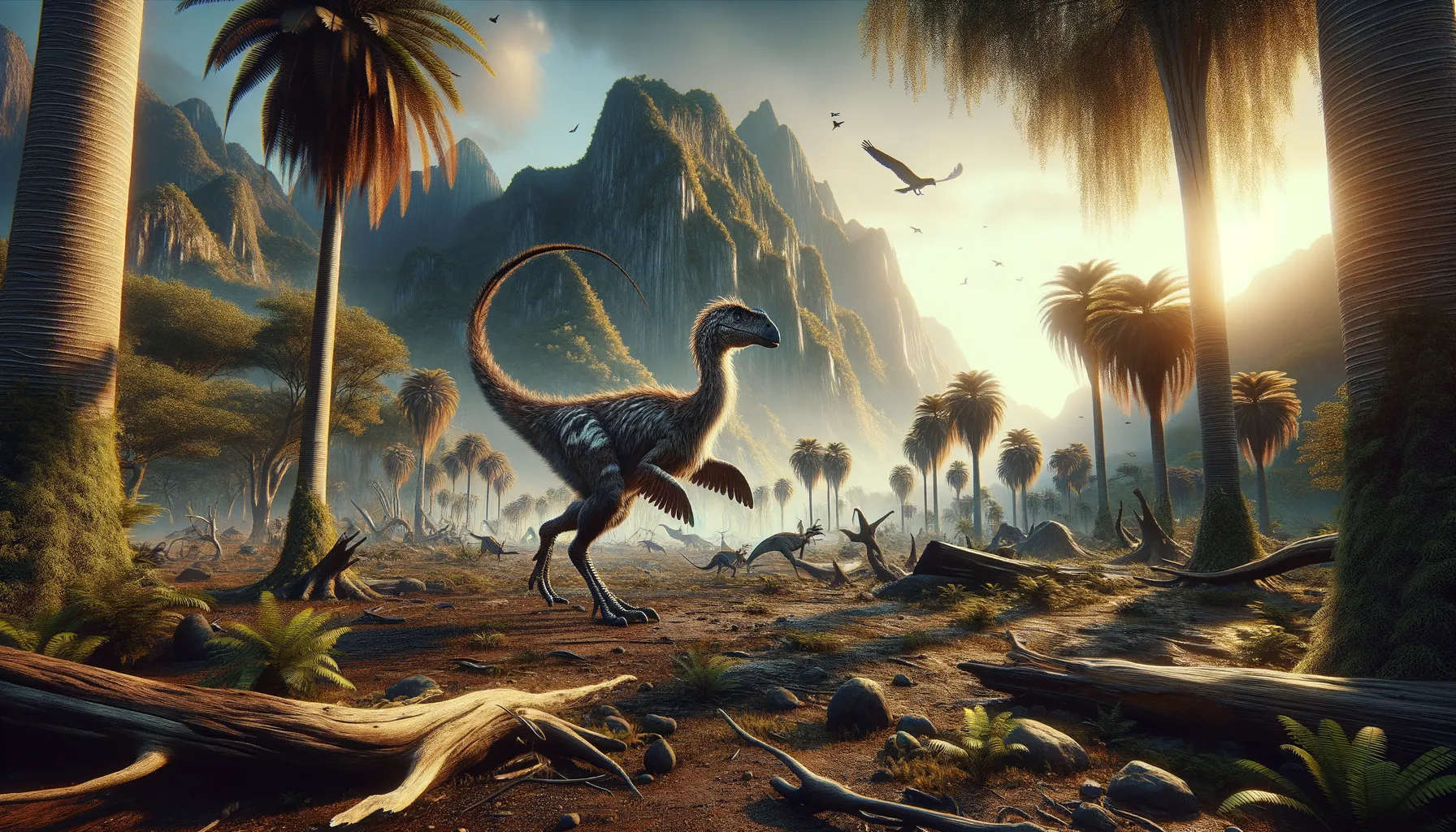
Luoyanggia
A modest predator of the ancient lands
Period
Cretaceous
Length
Approximately 2 meters long.
Height
Around 1 meter at the hips.
Weight
Estimated to weigh around 15 kg.
Luoyanggia was a small theropod dinosaur from the Cretaceous period, discovered in what is now China. It is believed to have been part of the oviraptorosaur family, which were feathered, bird-like dinosaurs. While Luoyanggia remains somewhat of a mystery due to limited finds, its connection to other oviraptorosaurs suggests it could have been an omnivore, feeding on small animals and plants.
Diet
Luoyanggia likely had an omnivorous diet, potentially consuming smaller animals and various plants. Its diet would have included small vertebrates and possibly eggs of other animals.
Hunting
As a small dinosaur, it likely hunted through stalking and quick bursts to catch smaller prey. Its hunting behavior might have also included foraging for plant material and scavenging.
Environmental challenges
During the Cretaceous period, Luoyanggia faced competition from both larger and smaller predators in a diverse ecosystem. Climate variations could lead to changes in food availability and necessitated adaptability. Predation from larger carnivorous dinosaurs was a constant threat, requiring vigilance and speed to escape.
Speed
Moderate walking speed.
Lifespan
Unknown due to limited fossil evidence.
First discovery
Discovered in Luoyang, China, in 2009.
Fun Facts
- Luoyanggia was a small, bird-like dinosaur that lived during the Late Cretaceous period.
- It got its name from Luoyang, the city in China where its fossils were first discovered.
- Luoyanggia belonged to the oviraptorosaur group, known for their beaked and feathered appearance.
- Despite having a beak, Luoyanggia likely fed on a mixed diet of plants and small animals.
- Scientists believe Luoyanggia had feathers and could have looked quite similar to modern birds, although it could not fly.
- The fossils of Luoyanggia help researchers understand the evolution of birds from dinosaurs.
Growth and Development
Luoyanggia was likely to be precocial, developing rapidly after hatching to quickly become mobile. Growth rates might have been influenced by resource availability and predation pressures. Young Luoyanggia probably stayed in close proximity to its nest or parental figures until reaching a certain size.
Habitat
Luoyanggia's habitat consisted of forested areas interspersed with open plains, allowing for access to different food sources. These environments provided both vegetation and small fauna for sustenance. Natural shelters such as rocky outcrops and vegetation offered protection from larger predators.
Interaction with other species
Luoyanggia likely coexisted with a variety of dinosaur species, ranging from herbivores to predators. Interactions could have included competition for resources with other omnivorous or herbivorous creatures. It would need to stay alert to avoid encounters with larger predatory dinosaurs.
Natural lifespan
The natural lifespan remains speculative due to fossil limitations.
Reproduction
Its reproduction likely involved laying eggs, with nests possibly built near safe, isolated areas. Parental care could have included guarding the nest and young hatchlings until they were capable of independence. The reproductive cycle could have been influenced by seasonal variations in the environment.
Social behaviour
Luoyanggia might have exhibited solitary behavior or lived in small groups to reduce predation risk. Any social interactions would have been focused on mating and territorial disputes. Communication likely involved vocalizations and visual displays, crucial for attracting mates and warding off rivals.
Fossil locations
Fossils of Luoyanggia have been found primarily in Henan Province, China. The region's geological layers date back to the Late Cretaceous, providing insights into its ecosystem. Continued exploration in the area holds potential for discovering more about this enigmatic dinosaur.
